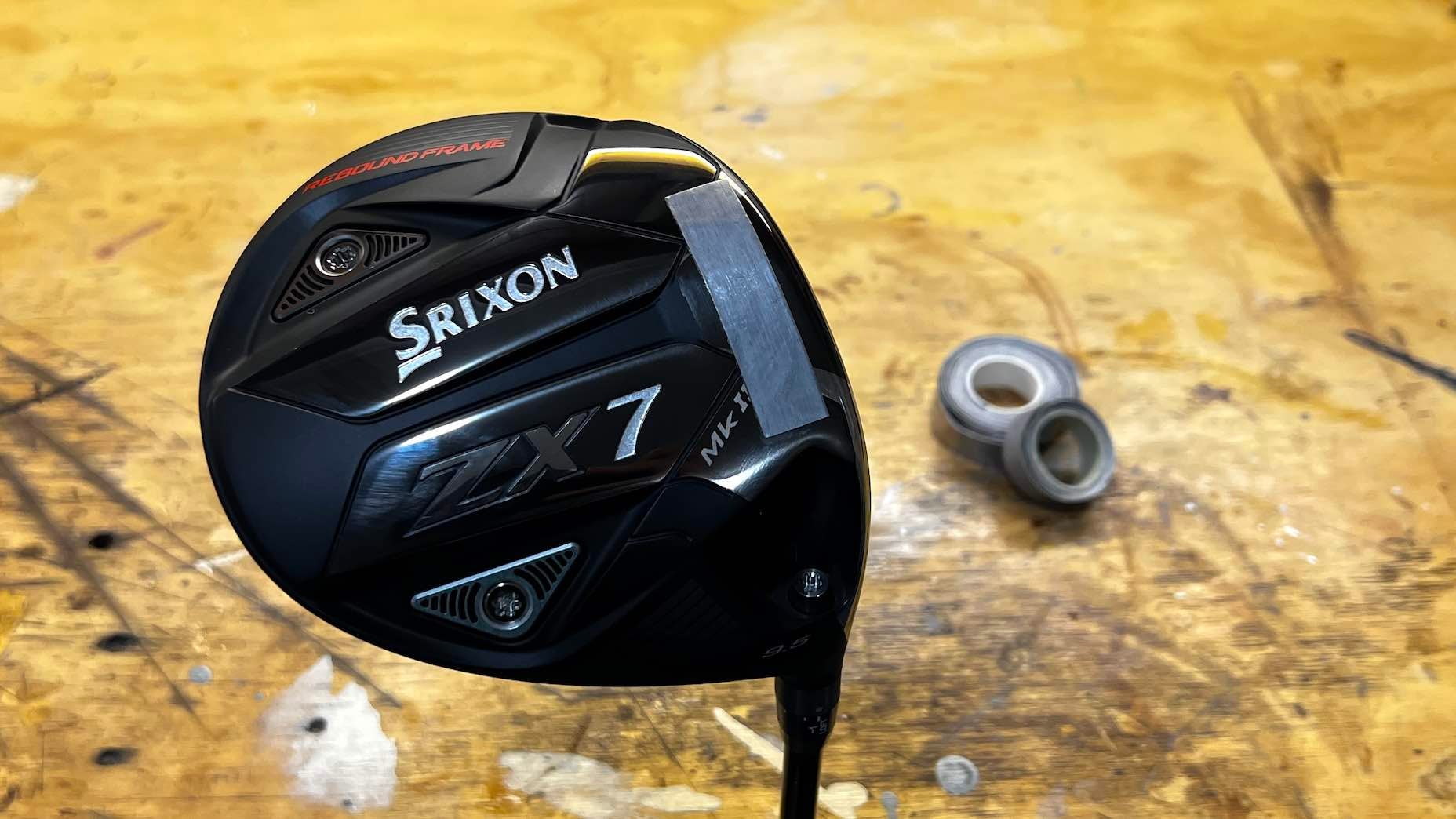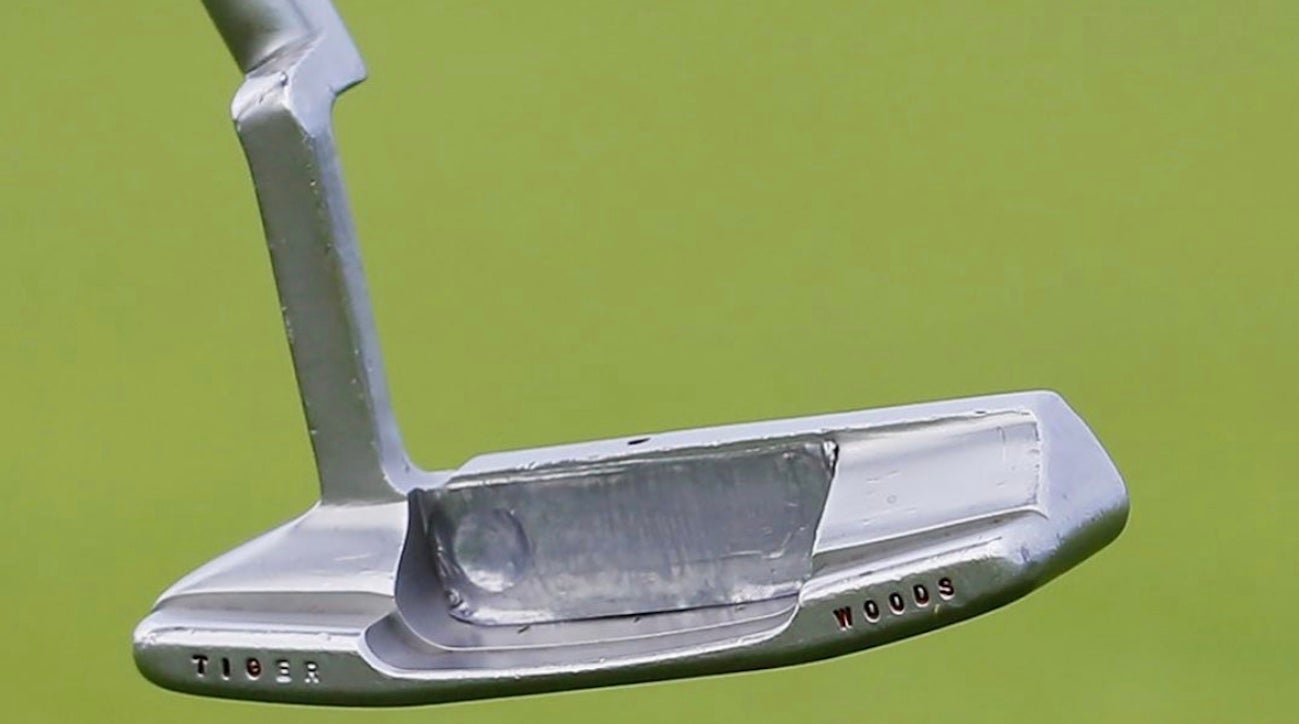
Lead tape on the sole of a driver can change how it feels
Ryan Barath
Welcome to Gear Questions You’re Afraid to Ask, a GOLF.com series produced in partnership with Cleveland/Srixon Golf. This week we unpack where you should consider applying some lead tape to your clubs.
Where can I apply lead tape on my club? – Ron R., Nevada
Ron, we appreciate your simple and direct question, especially as it follows up on our recent test to see how much lead tape it really takes to change a driver’s shots shape. And to answer it as simply as we can, here goes: you can apply it anywhere on the clubhead or shaft that you want, as long as it’s affixed securely and not anywhere on the clubface or putter face. (For a deeper interpretation of Rule 14-3, check out Decisions 4-1/4 and 4-2/0.5 in the Rules of Golf.)
For those unfamiliar, lead tape is a thin, adhesive-backed strip of lead that can be used to adjust the total weight (club weight) and also how the club feels when you swing (swing weight). While commonly used on the back cavity or flange of irons, wedges and putters, lead tape can also be applied to the rear, back or bottom of hybrid, fairway wood and driver heads to adjust the center of gravity (CG) and better suit a player’s desired shot shapes.
Even more intriguing, lead tape can be placed on the shaft and even below the grip. Some players like Jack Nicklaus and Sergio Garcia use lead tape under their grips to counter-balance the clubhead’s weight, making the club feel lighter during the swing. Other players like to use lead tape on the back or bottom of their putters, adjusting the weight and feel to better match their desired feel and stroke characteristics.
We’ve also experimented by adding lead tape midway on the putter shaft to add weight and improve stroke consistency, too. Did it work? Well, the jury is still out on that, but at the very least it does remind you to take a less yippy putting stroke. Placebo or not, that’s gotta count for something.

Getty Images
Before you go adding lead tape to your clubs, it’s important to understand that even small amounts of lead tape can significantly affect a club’s feel and performance. On average, a one-inch strip of lead tape weighs about one-to-two grams, and it only takes two grams to move from one swingweight to the next. Meaning even minor adjustments in how much and also where you apply lead tape will have a noticeable impact.
Also, bear in mind that lead tape is soft and can get damaged over time, especially if not affixed carefully. It can rub away on your golf bag, hands or other clubs in your bag. However, this is easy to fix or repair, and lead tape remains one of the most inexpensive equipment hacks you can try. So go ahead and feel free to experiment with adding lead tape anywhere you’d like (except on the clubface) on any of your clubs and see if it works for you.
Here’s a few more tips for using lead tape:
- Make sure wherever you apply it is sparkly clean. Any dirt will prevent the tape from sticking and it’ll likely fall off.
- Press down on the edges with a golf ball to eliminate any raised edges. This will also help prevent the tape from peeling away.
- Don’t apply more than two 1-inch strips of tape without testing how it feels.
- If you’re applying lead tape under your grip, be sure to put it directly on the shaft first. And, the wrap method is preferred to prevent the lead tape from protruding out from under the grip. Once you apply the lead, then add some grip tape on top.
- Lastly, make sure to wash your hands after applying any lead tape — it is lead after all.
All of our market picks are independently selected and curated by the editorial team.
If you buy a linked product,
GOLF.COM may earn a fee. Pricing may vary.
Want to overhaul your bag for 2023? Find a fitting location near you at GOLF’s affiliate company True Spec Golf. For more on the latest gear news and information, check out our latest Fully Equipped podcast below.










